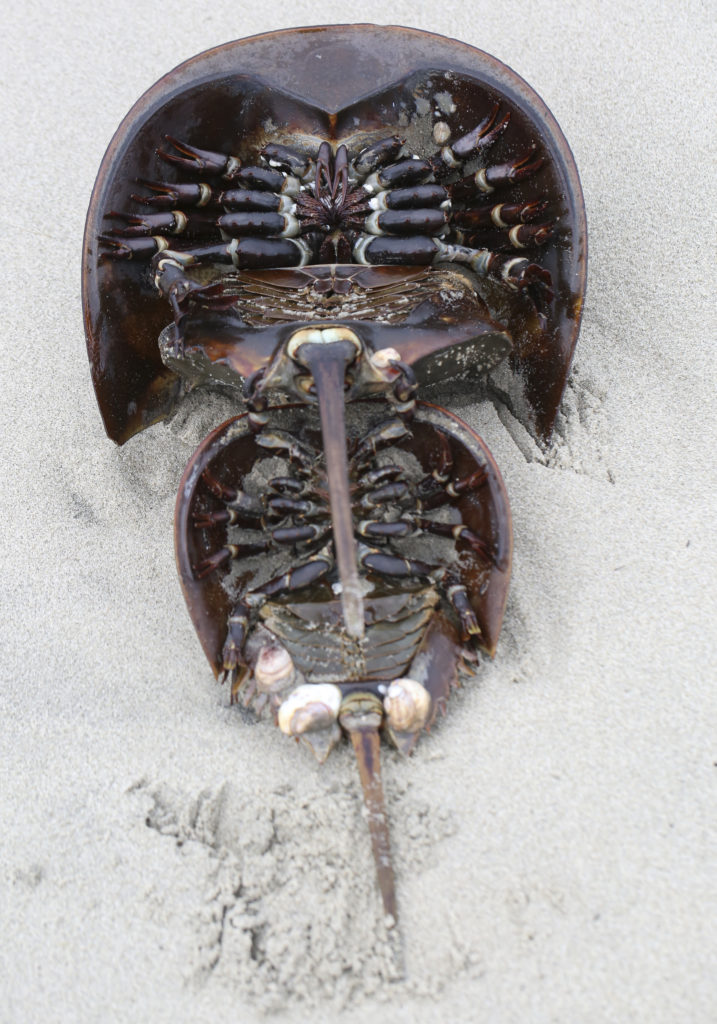Community Science in Chesapeake Country

By Wayne Bierbaum
It does not take a science degree to be curious or concerned about the natural world that surrounds you. Citizen science is the practice of public participation and collaboration in scientific research to increase scientific knowledge. Some of the most interesting discoveries were made by a citizen scientist.
For example, STEVE (strong thermal emission velocity enhancement), a mysterious blue light in thin ribbons was found at the edge of the Arctic Circle by amateur skywatchers. An unstable star, Tabby’s Star, was found by citizen scientists as part of the Planet Hunters Project. It likely is a star that swallowed a planet. A project looking for comets called SOHO has found more than 3,400 comets, as of late 2017, most of them by amateurs accessing SOHO real-time data via the Internet. Currently, the U.S. government list 493 projects that are currently listed at CitizenScience.gov. It is a very interesting site to look through.
I have been involved with a very large citizen science project: eBird. EBird is a site anyone can join and list birds they have seen on a particular day or trip. It has revealed new migratory paths, shown the effects of global warming on bird ranges and continues to find new information on a daily basis.
I also participate in Clean Swell by Ocean Conservancy. As I pick up trash in a marsh or beach, I can document what type of trash it is. I began using Clean Swell while doing a spring marsh clean-up at Jug Bay Wetlands Sanctuary.
Recently, I was notified about a local citizen science project that involves a keystone species for the Chesapeake Bay.
Dr. Paul Bushmann at Anne Arundel Community College’s Environmental Center is currently studying horseshoe crabs in the Chesapeake Bay. As described by the Environmental Center, “Although the horseshoe crab (Limulus polyphemus) has received considerable attention in Delaware Bay, very little is known about horseshoe crabs in the Chesapeake Bay. For the past 12 years, Anne Arundel Community College has led a field study of the horseshoe crab at Cove Point Beach in Calvert County. Under the direction of Professor Paul Bushmann, Ph.D., students have participated in all aspects of the research. The work has included spawning numbers, tagging for population studies, sand cores for analysis, chemical testing of beach sediments for H2S and construction of a beach profile. This continuing project has shown us shown us many interesting, novel aspects of Chesapeake horseshoe crab biology.”
Christine Goldman, administrative assistant to the dean, says the program is looking for volunteer citizen scientists from the community. “At AACC, our lab has developed a horseshoe crab counting method that requires only a smartphone. Our focus until now has been Cove Point beach in southern Calvert County where we have been surveying horseshoe crab spawning since 2004. Although our work continues at Cove Point, we hope to enlist volunteers from AACC or the larger community to survey additional beaches. In this way we can build a more complete picture of this phenomenon.”
The survey consists of walking a single pass along the beach, recording each spawning female and associated males. These surveys are conducted at or just before high tide in late May, June, and early July. Surveys are conducted during the nighttime high tide as these times typically have far greater numbers of spawning females. Since there is some daytime spawning, a daytime survey is also welcome.
As a citizen scientist, you would simply choose a survey beach and time(s) you would like to visit. Before you go, download the free “Anecdata” app. Once you have entered your email address, you can search for the project. Your work would consist of simply walking the beach within an hour of high tide and entering observations and pictures into the app. The program automatically submits username, time, date, and GPS coordinates.
At the end of the summer, all participants will receive a report showing the results of the year’s work. Once the database is large enough, the work will be submitted as a citizen scientist publication.
If you’d like to help survey horseshoe crabs, contact Goldman by phone (410-777-2607) or email [email protected].
